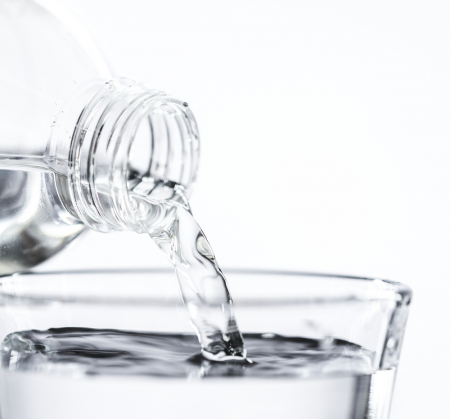 There are two important processes in potable water treatment:
There are two important processes in potable water treatment:- Water Purification – To remove particular contaminants from a water source.
- Water Disinfection – A specific purification process that kills or removes biological contaminants (cysts, bacteria, viruses, protozoans, etc.) from a water source.
- It taints the water.
- Is not effective against biofilms.
- Is subject to pH effects and other inconsistencies.
- Is easily neutralized by organic materials.
- Fails to kill cryptosporidium and other protozoa.
- Actually adds toxic chemical by-products (such as trihalomethanes) to the water in the disinfection process.
Traditional chlorination depends on the release of several forms of chlorine into the water such as hypochlorite ion and hypochlorous acid, collectively referred to as “free chlorine”. Hypochlorous acid is 100 times more effective as a disinfectant than hypochlorite but the chlorination method only produces this in low levels.
Cooling systems
Legionnaires’ disease, caused by the bacterium Legionella pneumophila is a severe form of pneumonia. In several hospital outbreaks, patients are thought to have been infected through exposure to contaminated aerosols generated by cooling towers. Legionellae resides within biofilm and is a particular problem in cooling tower systems and can prove difficult to eradicate by conventional means. It has been reported that biofilm bacteria can be up to 3000 times more resistant to standard chlorine disinfectants than unattached cells.Problem
Outbreaks of legionnaires’ disease and biological induced corrosion due to biofilm.
Solution
Continuous dosing of HOCL in to the cooling water kills all algae and prevents biofilm.
Swimming pools
ProblemPeriodic super chlorination of swimming pools irritates the skin causing rashes, burning eyes and sinuses without effectively killing the Pseudomonas bacteria.
Corrosion due to evaporation of chlorine gases.
Strict storage, handling and transport regulation makes the use of chlorine expensive and not preferred.
Usage of pH+ and other chemicals to keep pH of pool stable.
Solution
Dose an average of 1:800 HOCL in the circulation water (after filtration and prior to the inlet of the pool) of indoor pools to keep the pool free of any bacteria. No more swimmers eyes, skin irritation or chlorine smell.
Storm Water
ProblemStorm water discharges are generated by runoff from land and other impervious areas such as paved streets, parking lots, and building rooftops during rainfall and snow events that often contain pollutants in quantities that could adversely affect water quality. Most storm water discharges are considered point sources and require coverage by an NPDES permit. The primary method to control storm water discharges is through the use of best management practices.
Solution
HOCL can destroy bacteria and improve storm water quality so that it renders no dangers to human beings or the environment.
Drinking Water
ProblemPotable water in remote areas depend on dangerous transportation of chlorine for local disinfecting of ground, rain or surface water. If potable water is transported into the remote areas, the quality of the water may not be suitable for various users due to the heavy dosing of chlorine to ensure no contamination during transport.
Solution
HOCL is safe and stable for transport and does not require heavy dosing for disinfecting water as compared to chlorine.
Sewage Water
ECA generated alkaline water added into the waste water increases the surplus of electrons that are needed for the removal of heavy metals (industrial waste water treatment) or for the faster growing of the needed microorganisms (biological waste water treatment). Alkaline water lowers water tension while the growth of the organisms and the efficiency of the biological cleaning is increased significantly.A High redox potential destroys bacteria and viruses. HOCL increases the redox potential of water thereby disinfecting the water before releasing in the natural environment.

